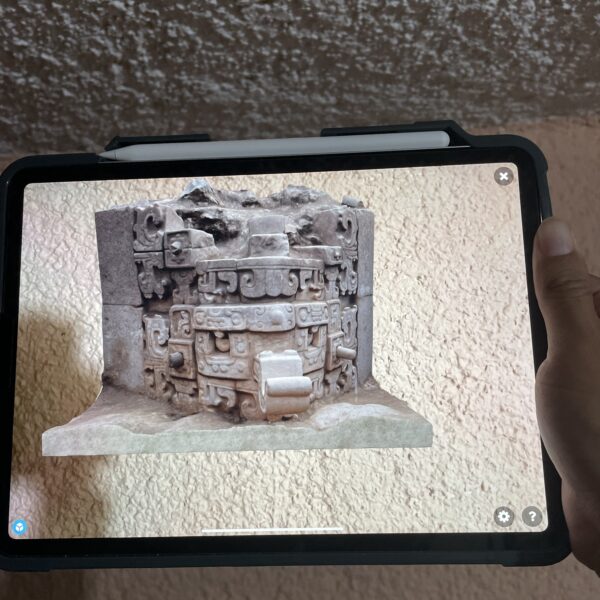Summary
Augmented reality (AR) is the technology that allows to use layers of virtual elements on real images, which allows users access to interactive experiences combining the virtual and real, physical dimension; this technology is applied by means of digital devices such as smartphones or virtual reality viewers (VRVs).
AR is a field of research and development that has grown in recent years through the booming growth of cell phones with video cameras and high processing capabilities.
Museums are using this new technology to offer more plausible environments that allow visitors to further immerse themselves, generating the possibility of interacting directly with the objects on display in an attractive, but at the same time educational, way.
This project aims to establish a system that allows the application of augmented and virtual reality in iconic and relevant places in the city of Uxmal.
Goal
- To have an augmented and virtual reality system of the most iconic and relevant places in the city of Uxmal.
- Commercializing this service, as well as its basic maintenance, will be the responsibility of the communities neighboring Uxmal, through a formal organization.
- Defining an intervention strategy for the places defined as iconic or relevant.
- Through the application of augmented reality and virtual reality technologies, develop the necessary interactive materials.
- Establishing a system for the maintenance, update, and replacement of equipment.
- Defining the initiative follow-up to ensure its continuous improvement.
- Strengthening of identity. Familiarity with the built heritage contributes to a solid conformation of the identity.
- Improvements to the local economy. The new ways of disseminating knowledge generate possibilities for economic improvement locally, regionally, and nationally.
- Leveraging technology for training children, youth, and the general population on patrimonial, historical, and social issues, using the knowledge of current science and the generational wisdom of the Maya.
- Environmental impact assessment.
Carrying out the environmental impact study and mitigating the actions based on the recommendations that allow an optimal space for the necessary equipment, facilities, and support tools. - Design and installation of Intranet – Internet.
Consulting with a specialist in the field to design a cloud-as-coverage and strategic places to have an efficient signal for the enjoyment of augmented and virtual reality technology. - Basic computer equipment and specialized equipment.
Having computer equipment, peripherals, and user licenses when necessary, as well as the solar energy system and cellular network of communication antennae for the optimal use of the equipment. As well as materials and equipment for content production. - Design and development of materials (Media).
Constituting a working group, made up of advanced students from the state’s Higher Education Institutions for the design and development of the materials to make the virtual reality and augmented reality system work. - Plan for socio-economic development of communities in the Region.
Developing training courses for young people to become new virtual guides with the support of the specialist in the field.
Definition and constitution of the formal organization, managed by the communities neighboring Uxmal, for the marketing, maintenance, care, and update of Uxmal’s augmented and virtual reality system.
Establishing a monitoring and evaluation system for the proper functioning of the initiative and its continuous improvement.
- Having an augmented and virtual reality system that is efficient and profitable, managed by the Maya communities around Uxmal.
- Having a high-tech resource that, in an attractive and educational way, interests and motivates children, youth, and the general public to take an interest and appropriate the Maya cultural and generational heritage, strengthening their identity.
- six for design;
- 12 months for the programming of the first materials;
- two months for equipment installation and testing;
- two months for testing and set-up;
- business training for four months; and
- constitution of the formal management body, six months.
- All initiatives, projects, and activities will feature every mechanism for timely, precise information to donors, and a quick and practical communication mechanism will be established between donors and beneficiaries, in order to have a direct relationship and to be able to assess the results and effectiveness of donations.
- Every initiative, project, and activity will be audited, and its information be made available to donors, upon request, in accordance with the corresponding regulations.
- All the information regarding the initiatives, projects, and actions developed with the support and sponsorship of the Foundation will be available on the Foundation’s website, in accordance with the applicable regulations.
- The results will be announced and disseminated through all the foundation’s electronic channels, website, social networks, as well as a direct communication system via email with donors and any person who requests the information.
- The publication of the results will also be promoted in dissemination journals, mass media, such as newspapers and magazines, and in specialized and specific media, both for dissemination and for academic purposes.

